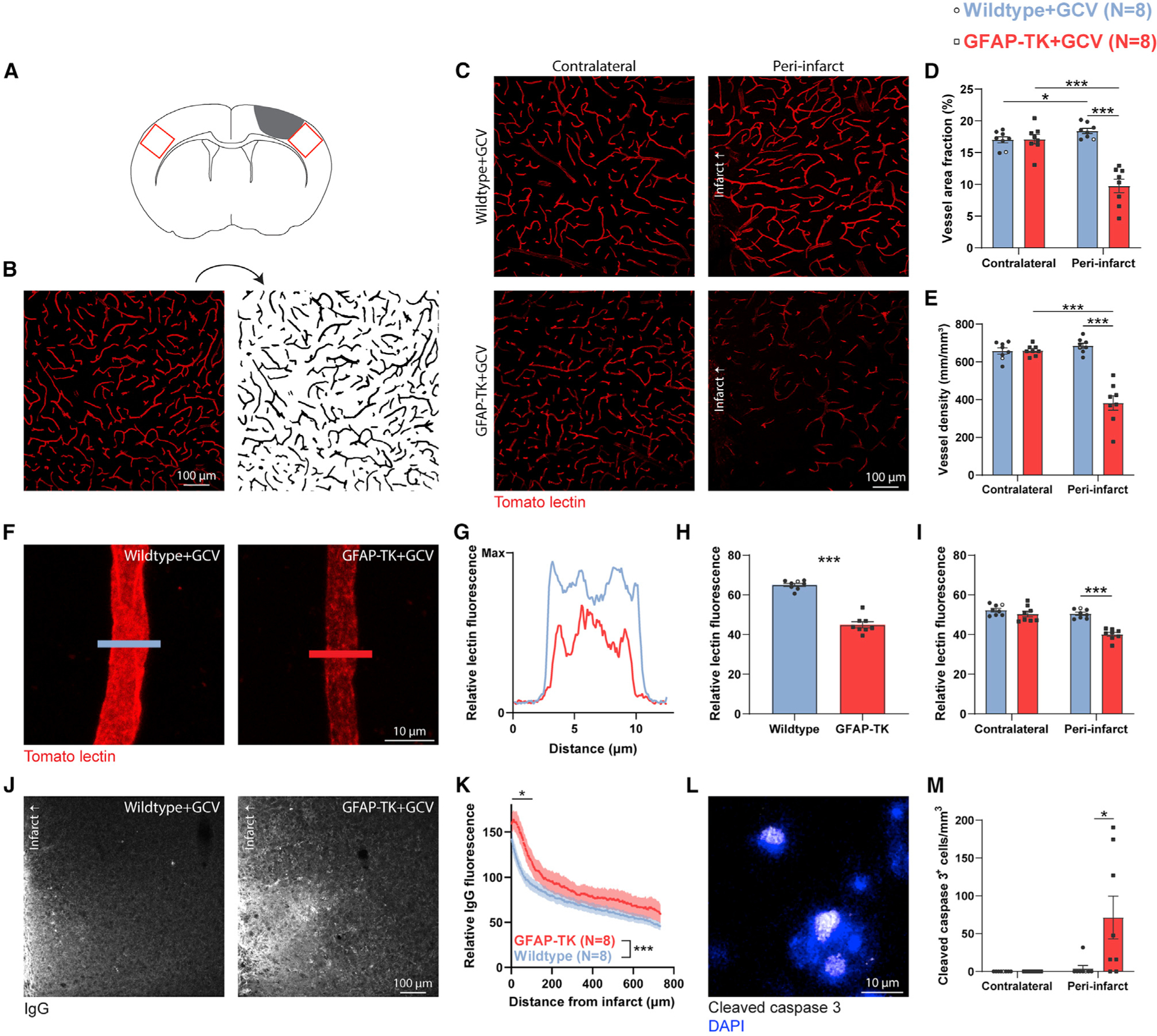Figure 4. Astrocyte ablation impairs vascular remodeling and exacerbates vascular permeability, which is associated with chronic cell death.

(A) Sampling regions for images from peri-infarct and homotopic contralateral cortex (red boxes).
(B) Example of processing and binarization of a confocal image of tomato lectin-labeled vasculature.
(C–E) Confocal images (C) and quantification (D and E) of vasculature from 14 days post-stroke show that astrocyte ablation markedly impaired vascular remodeling in peri-infarct cortex, as measured by reduced vascular area fraction and length. *p < 0.05, ***p < 0.001, t tests (n = 8 mice/group).
(F) Representative high-magnification images of lectin-labeled vessels.
(G) Lectin fluorescence intensity measured across line profiles as indicated in (F).
(H and I) Quantification of glycocalyx coverage as lectin fluorescence from line profiles (H) and within vessel masks (I). ***t(14) ≥ 8.1, p < 0.0001.
(J and K) Representative confocal images (J) and quantification (K) of IgG demonstrate increased vascular permeability in peri-infarct cortex of GFAP-TK mice. Two-way ANOVA showed significant effects of distance (F(484,6790) = 11.6, p < 0.0001) and group (F(1, 6790) = 836.3, p < 0.0001). Comparison between mean fluorescence in 50-μm bins showed a significant difference between groups within 100 μm from the infarct border (*t(14) ≥ 2.2, p ≤ 0.043, t tests).
(L and M) Confocal image (L) and quantification (M) of cleaved caspase-3+ cells. Astrocyte ablation significantly increased the number of apoptotic cleaved caspase-3+ cells in peri-infarct cortex at 14 days post-stroke. *U = 11, p = 0.018, Mann-Whitney U test. No cleaved caspase-3+ cells were observed in homotopic contralateral cortex.
Data are presented as mean ± SEM. When replicates are shown, data points representing males are shown as filled symbols; data points representing females are shown as open symbols.
